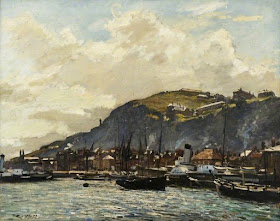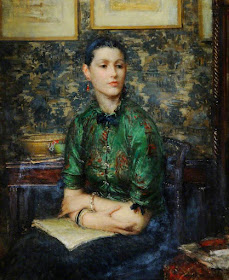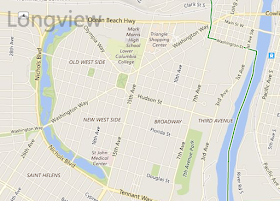There are a few artists whose personal lives are more interesting than their work: Frieda Kahlo immediately comes to mind. Then there are others where paintings and biographies come close to striking a balance. Salvandor Dalí is a famous example. A less well-known example is Suzanne Valadon (1865-1938), whose biography is lightly sketched
here. For some, she is best known for being the mother of
Maurice Utrillo, a more famous Montmartre painter.
A while ago I visited the Montmartre museum housed in a building where she had her apartment and studio for a number of years. I took photos and posted about it
here and
here. Probably as a result of those posts the publisher of "Renoir's Dancer: The Secret Life of Suzanne Valadon" by Catherine Hewitt sent me a review copy. The book, already available in England, is due to be published in the USA late February: Amazon link
here.
The image on the cover is of probably the most famous painting for which she modeled. It's by Renoir (hence the book's title), who depicted women in something approaching a uniform style. That's why the young lady doesn't resemble Valadon as closely as it might. During her modeling days, she slept around a lot, probably the reason for the book's subtitle. As for modeling, other famous artists she worked for included Puvis de Chevannes and Toulouse-Lautrec. The latter encouraged her drawing efforts (she was a "natural"), but it was the prickly Degas who was most responsible for giving her confidence and help.
I have a tattered 1959 edition of "The Valadon Drama: the Life of Suzanne Valadon" by John Storm (link to recent reprint
here). I skimmed through it before reading Hewitt's book so as to have a mental yardstick for evaluation. There are other Valadon biographies out there, given her colorful life.
So why another Valadon biography? The author, who has a doctorate, set her goal as providing a well-researched treatment that would be accessible to the general public. Did she succeed?
Well, the bibliography is extensive, even referencing dozens of newspaper articles and web sites as well as the expected books and journal articles. She provides suitable background information on Valadon's various living environments as well as on the famous and not so well-known people in her life. This should be useful for readers who have little knowledge of the 1880-1935 Paris art scene or even France in general during that time. Hewitt mentions many of Valadon's paintings during the course of the book along with paintings and drawings made of her by famous artists for whom she posed (and sometimes more!). My review copy has no color images of such works nor a contents reference to any. However, the English edition has color inserts, so presumably there will be the same for the American edition. After all, it can be frustrating to read about paintings without being able to see them, so that is good. Paintings mentioned, but not in the book, can often be found via the internet, if a reader is especially curious.
The main substantive difference from Storm's book is the he insisted that she was never legally married to Paul Moussis, whereas Hewitt makes it clear that she was indeed married to him.
My main complaint about Hewitt's treatment is that she fairly often mentions the mental and emotional states of Suzanne, her mother, and some others that are not documented in the many footnotes. That is, she is making educated guesses. I assume that to keep the narrative flowing for her target audience, she does not qualify these statements. For example, she might have written "Suzanne was probably most worried about Maurice's latest drunken spree." I invented that sentence, but if it had appeared in the book, the word "probably" would not be found. My stripped-down review copy has no author introduction, so if there is one in the published version, perhaps Hewitt will mention her reasoning regarding this policy.



















































